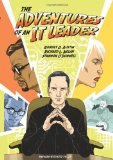It’s a universal trait, it seems: we all want to be understood, want the world to see things through our eyes, want to watch the “aha” light go on when people finally realize just how tough we have it and how magnificently we still prevail.
IT people, and senior technology executives in particular, are anything but exceptions to this longing. In fact, it seems that very few other disciplines have to put up with a constant stream of articles and books questioning our very existence, approaches, purpose, and worth (Does IT Matter?, the death of the CIO , etc.). Even the acronym CIO is commonly and gleefully referred to as standing for “Career Is Over”. And you want a downer? Just try googling “average tenure of the CIO”.
A person could downright get a complex here. No one seems to get it! No one understands how tough a job this is! No one seems to perceive the “damned if we do, damned if we don’t” intrinsic nature of our role. I present this syndrome with all due humor (“against the assault of laughter nothing can stand”, said Mark Twain), but I also mean it: is it utter masochism that leads us to choose this “whipping boy” kind of career at this level?
That’s why it’s so welcome when a book comes along that effectively presents insight and understanding into the “big picture” struggles of today’s CIO, even combined with empathy and warmth. Martha Heller’s The CIO Paradox: Battling the Contradictions of IT Leadership, just out late last year, brims with “been there seen that” deep insight into many of the standard CIO predicaments.



